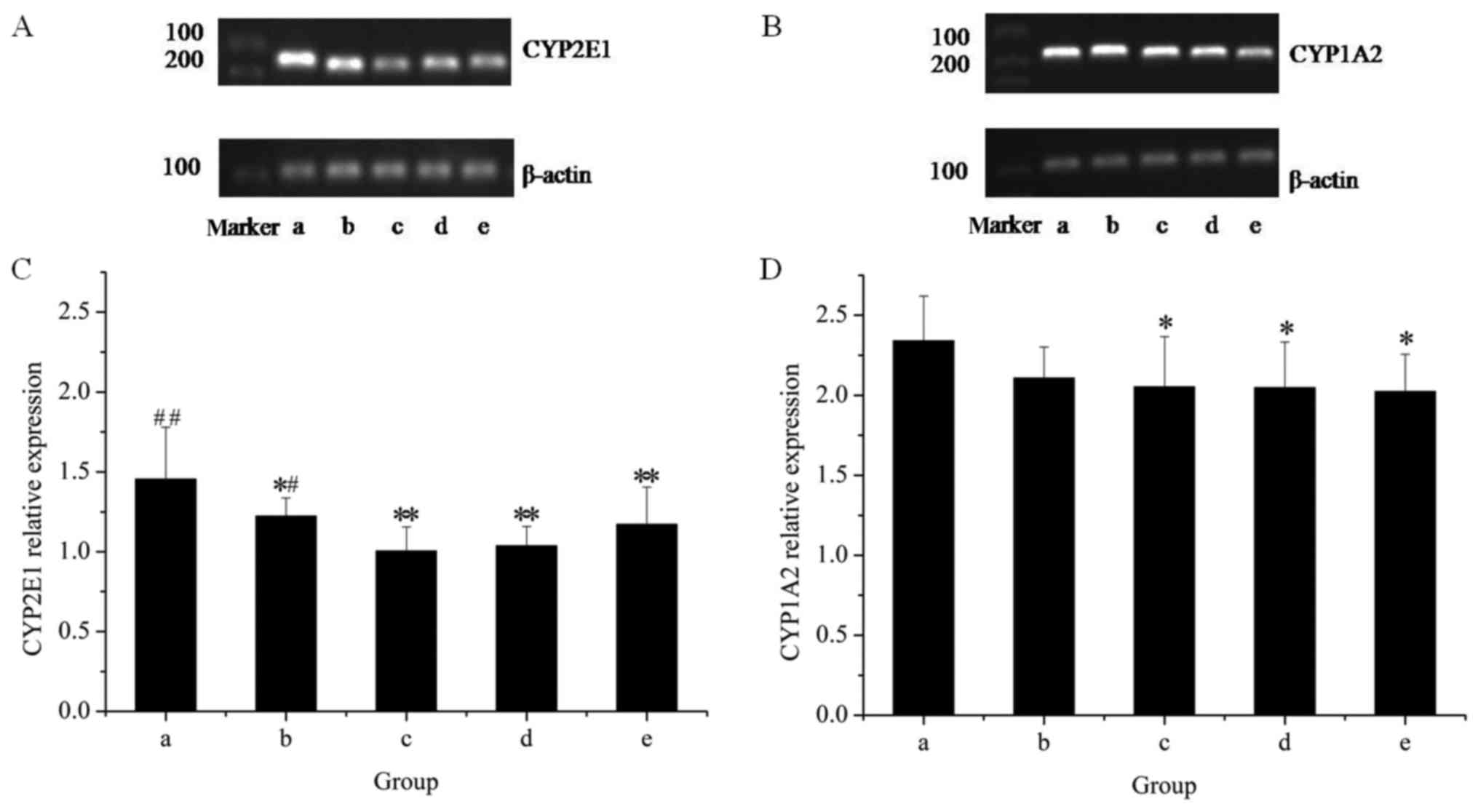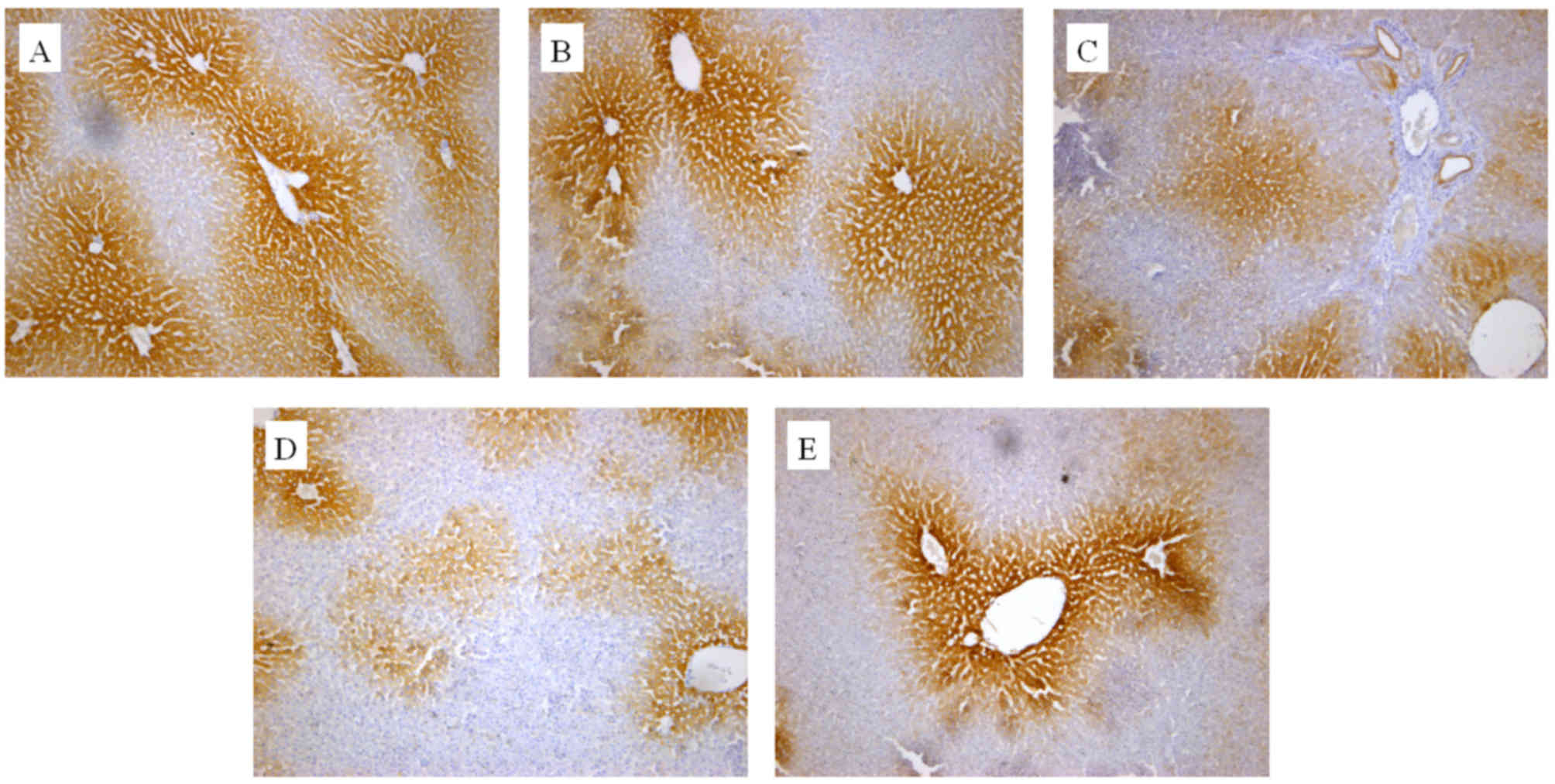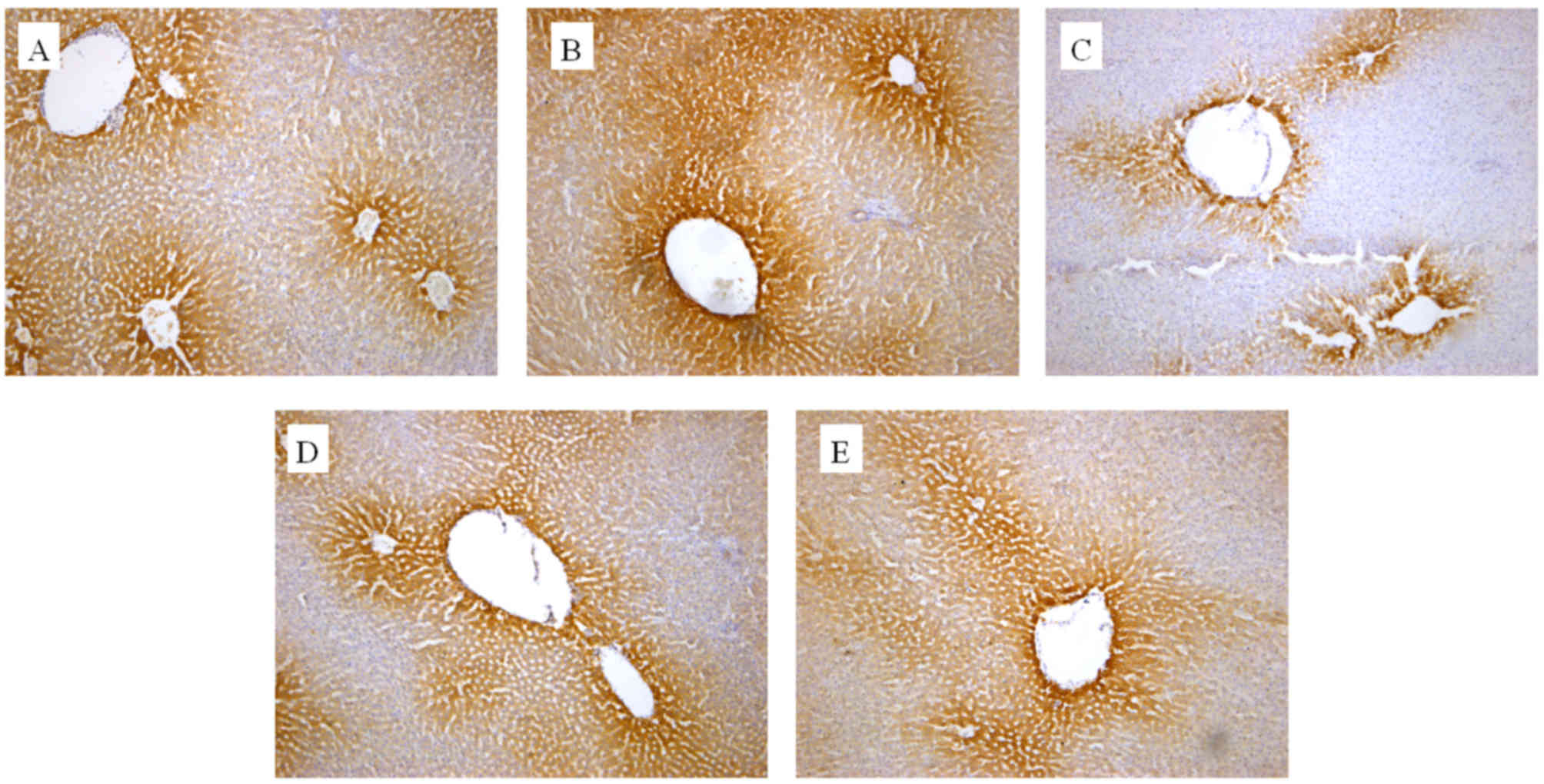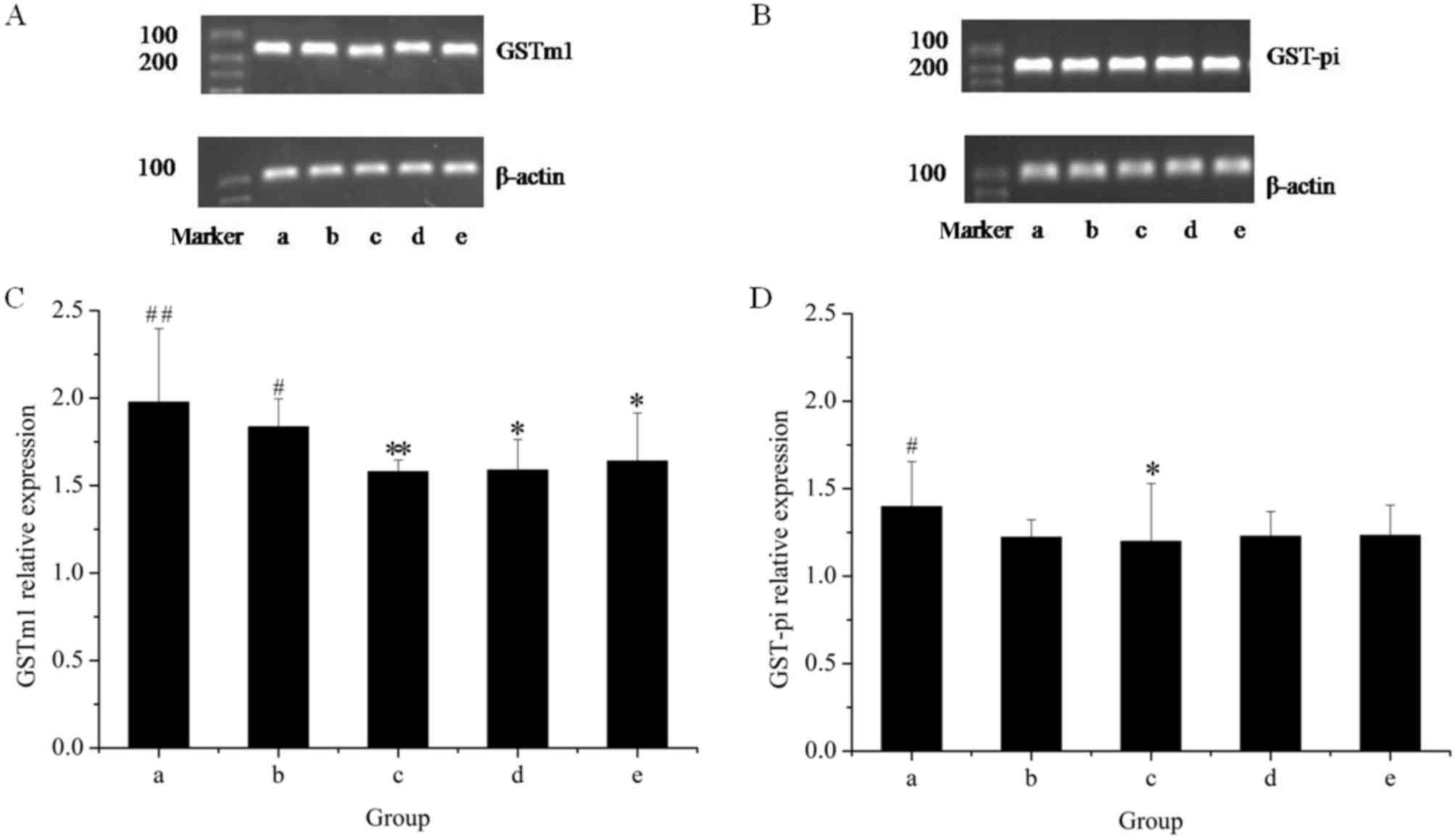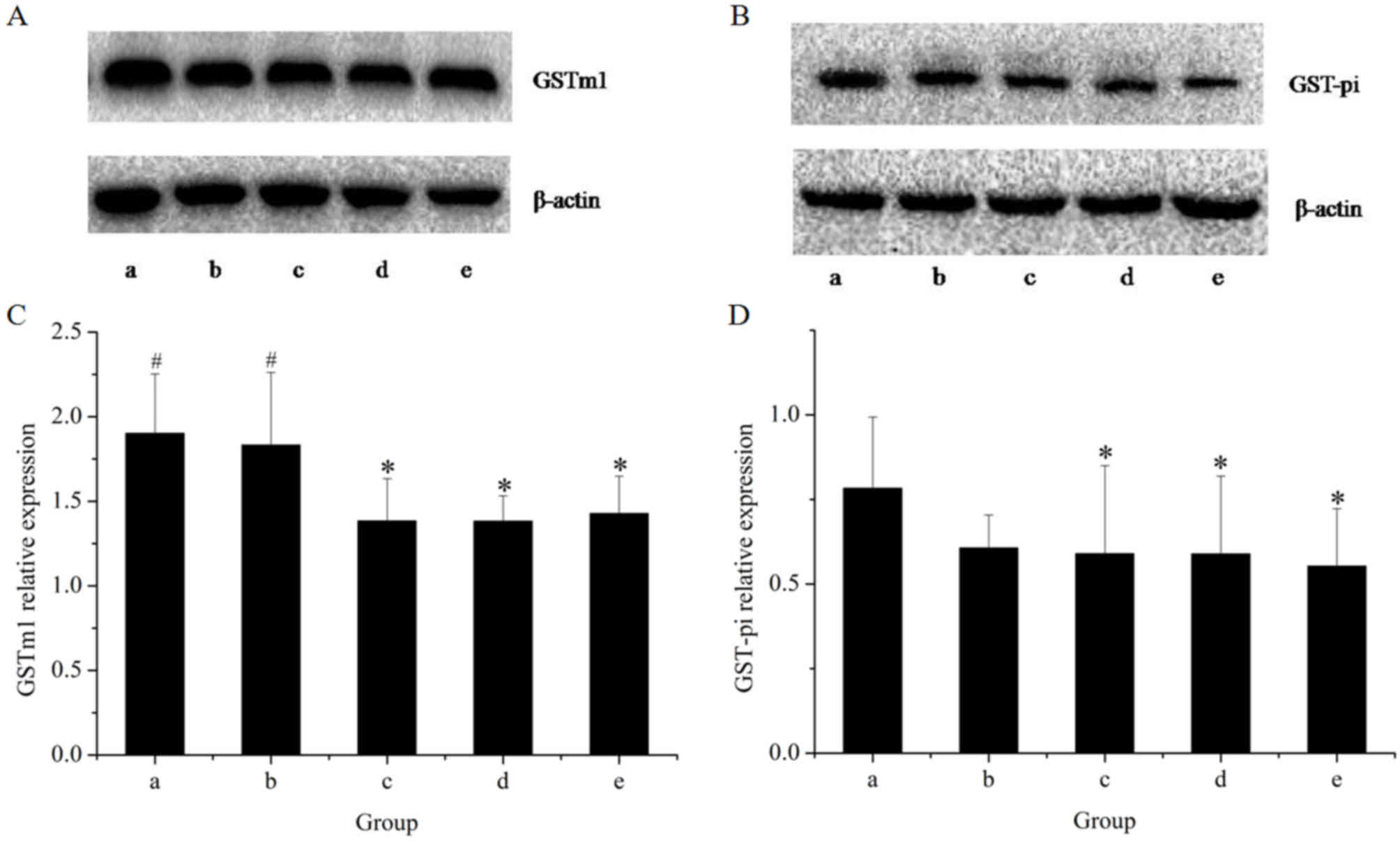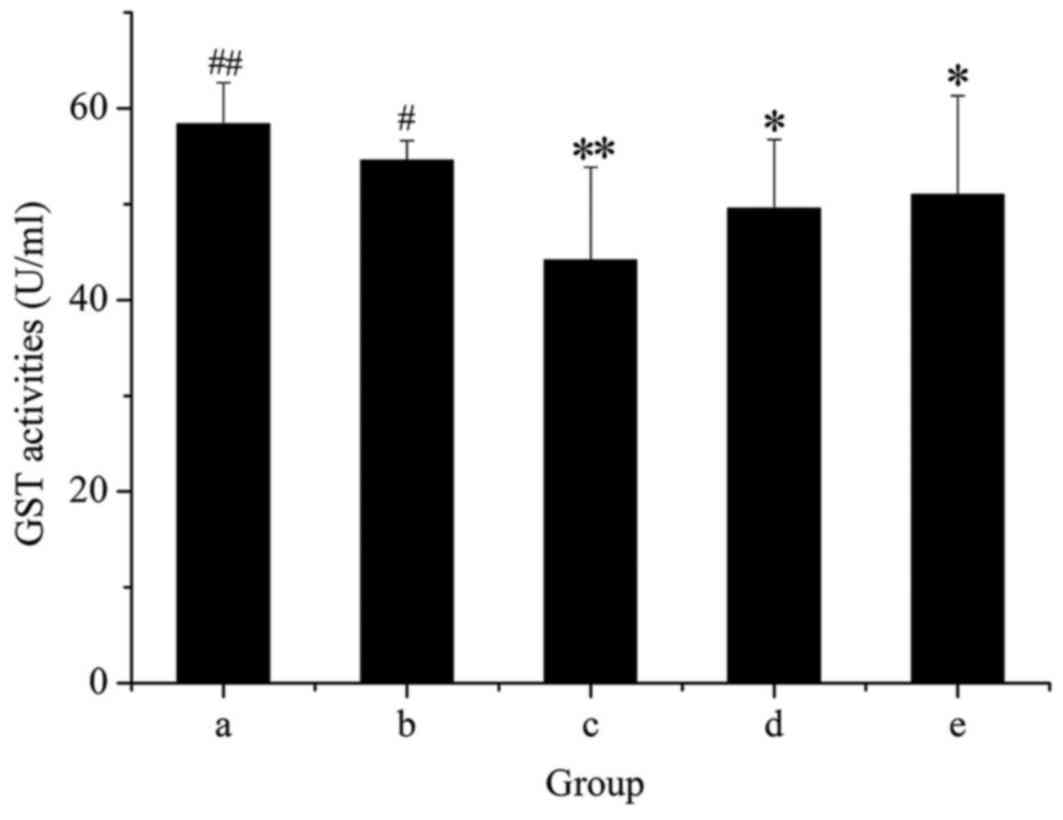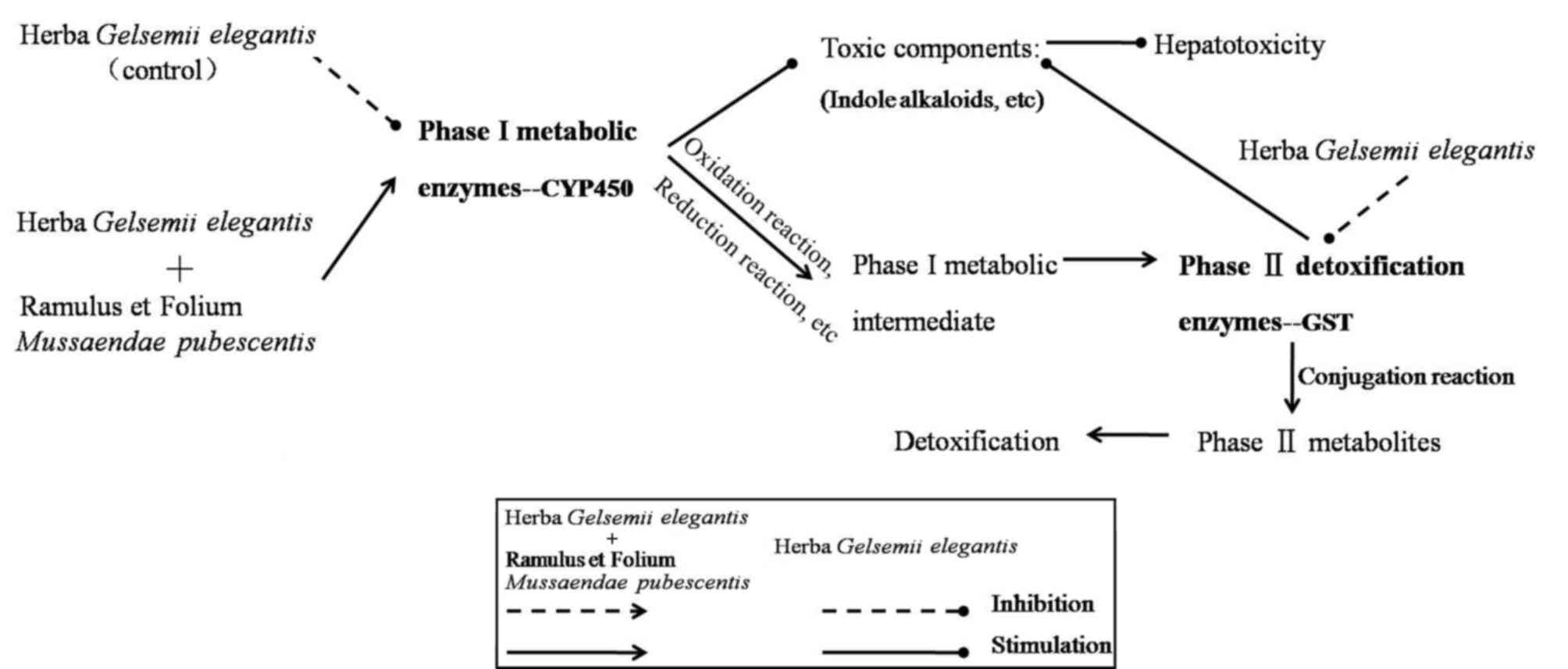Herba Gelsemii elegantis is detoxified by ramulus et folium Mussaendae pubescentis extract by modulating hepatic cytochrome P450 and glutathione S‑transferase enzymes in rats
- Authors:
- Published online on: October 23, 2017 https://doi.org/10.3892/etm.2017.5351
- Pages: 226-234
-
Copyright: © Wang et al. This is an open access article distributed under the terms of Creative Commons Attribution License.
Metrics:
Total
Views: 0 (Spandidos Publications: | PMC Statistics:
)
Total PDF Downloads: 0 (Spandidos Publications: | PMC Statistics:
)
Abstract
Herba Gelsemii elegantis (GE) has been frequently used as a Chinese folk medicine but has high acute toxicity. In Traditional Chinese Medicine, it may be detoxified by Ramulus et Folium Mussaendae pubescentis (MP), but the detoxification mechanism has remained elusive. The present study aimed to evaluate the detoxification mechanisms by which MP modulates the effect of GE in rats, including the inhibition of hepatic cytochrome P (CYP)450 and glutathione S‑transferase (GST) enzymes. Male Sprague Dawley rats were orally administered GE at three doses (0.36, 0.43 or 0.54 g/kg) alone and, at the highest dose, in combination with MP (21.6 g/kg) every day for 7 consecutive days. The control group of animals received the same volume of saline. The mRNA and protein expression of hepatic CYPs representative of two subfamilies (CYP2E1 and CYP1A2) were separately assessed by reverse‑transcription quantitative polymerase chain reaction (RT‑qPCR), western blot and immunohistochemistry assays. The mRNA and protein expression as well as enzyme activity of hepatic GST were assessed by RT‑qPCR, western blot and colorimetric assays, respectively. The results indicated that GE significantly inhibited CYP2E1 mRNA and protein expression in a dose‑dependent manner. Co‑administration of MP increased CYP2E1 mRNA and protein expression as compared with the high GE dose alone. Cells expressing CYP2E1, located around the hepatic vascular plexus under a clear background, were identified by immunohistochemical staining. The results for CYP1A2 were similar to those for CYP2E1. At all concentrations used, GE significantly inhibited GST mu 1 (GSTm1) mRNA and protein expression in a dose‑dependent manner, as compared with the control. Combination of GE and MP increased the mRNA and protein expression of GSTm1 as compared with the high dose of GE. However, the differences in GST‑pi mRNA and protein expression between the GE and GE + MP groups were not significant. Of note, rats co‑treated with MP were significantly protected from the decrease in GST activity produced by GE. The present study indicated that co‑administration of GE and MP upregulated the activities of CYP450 and GST enzymes when compared with GE alone. This modulation may explain for the effect of MP in reducing the acute toxicity of GE.



